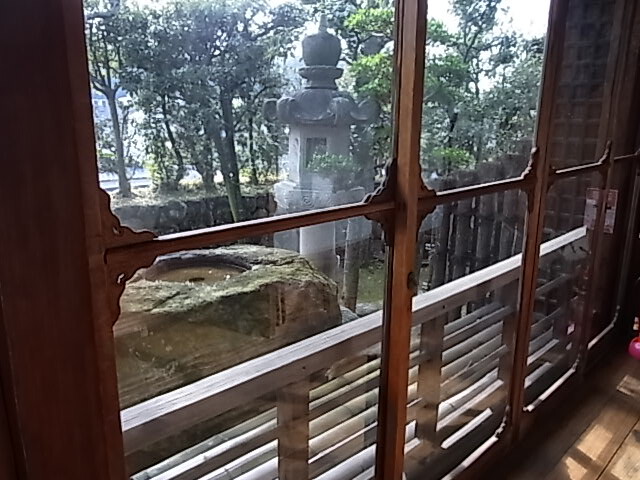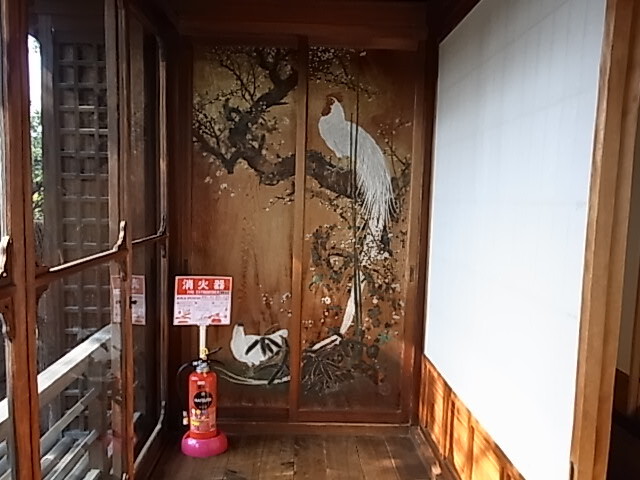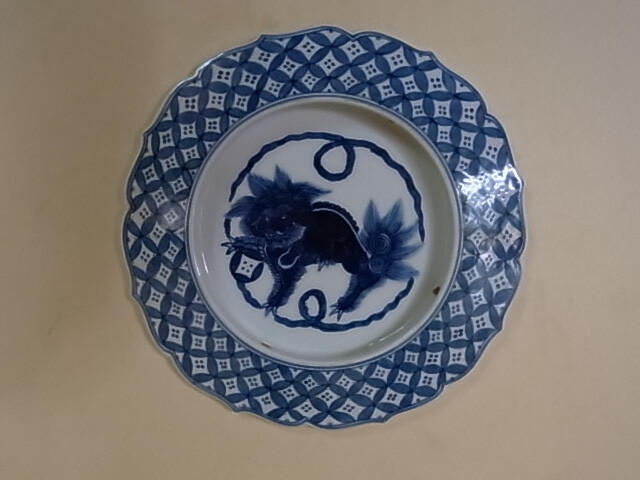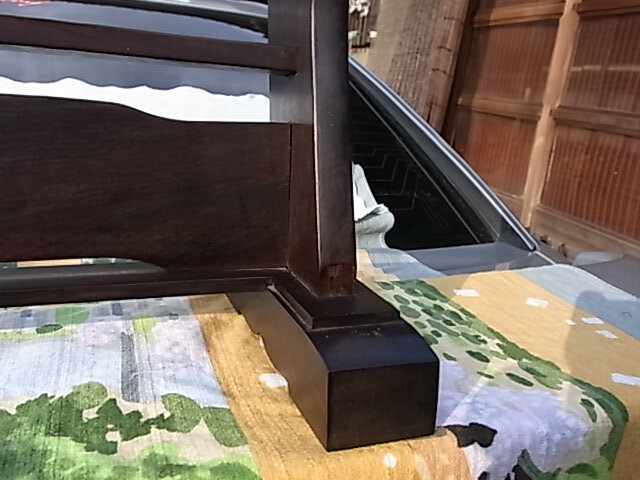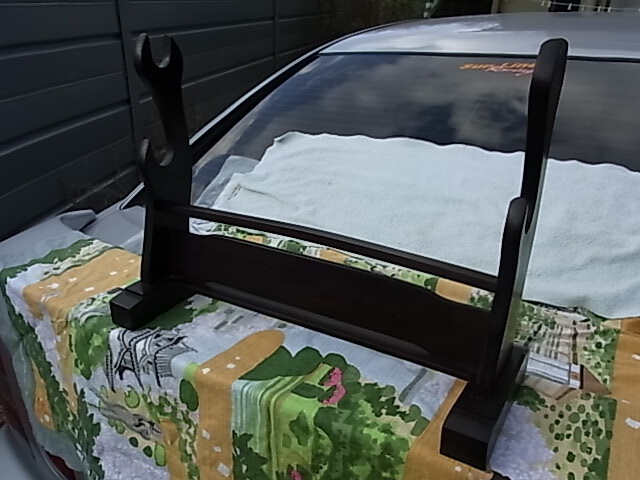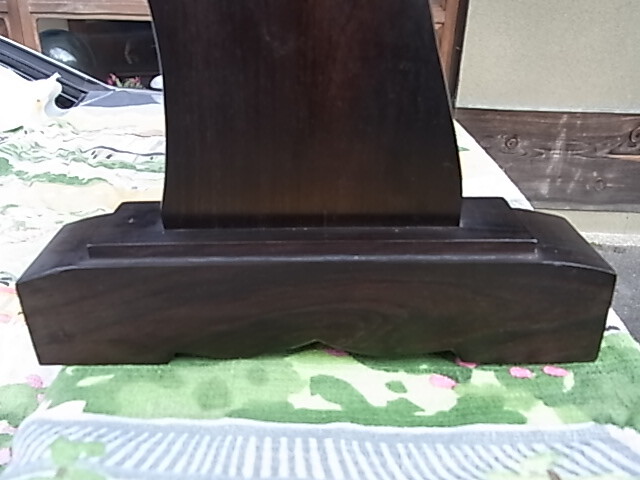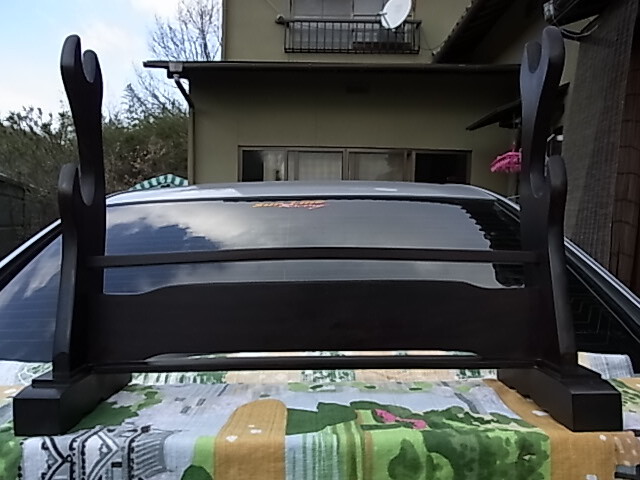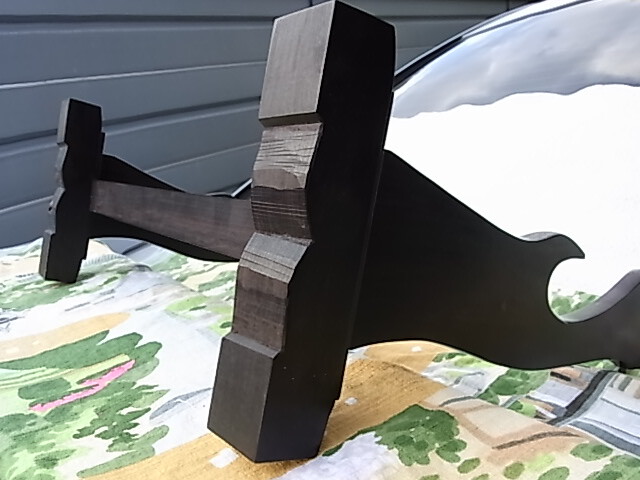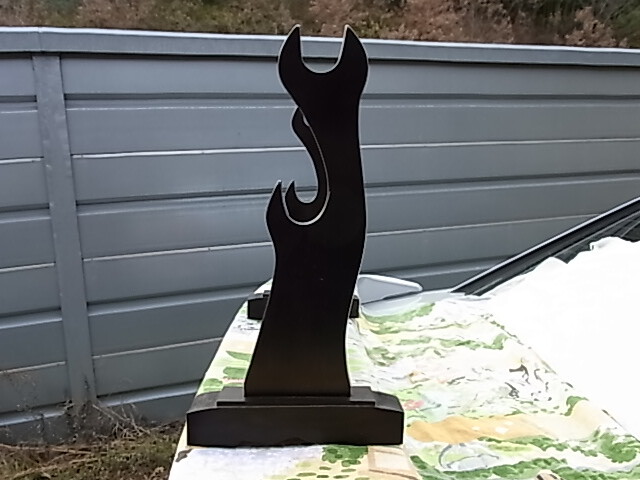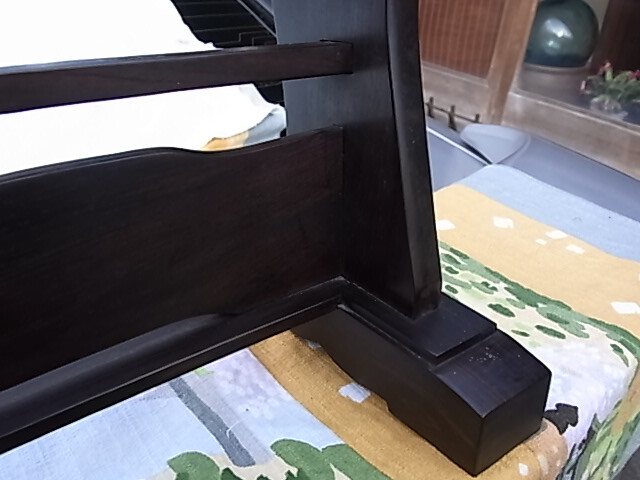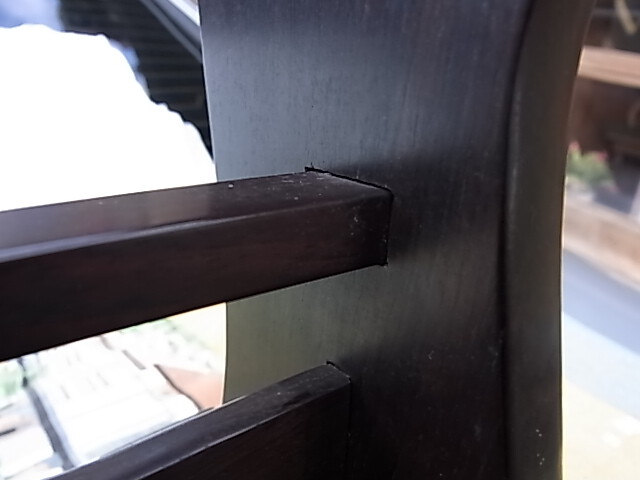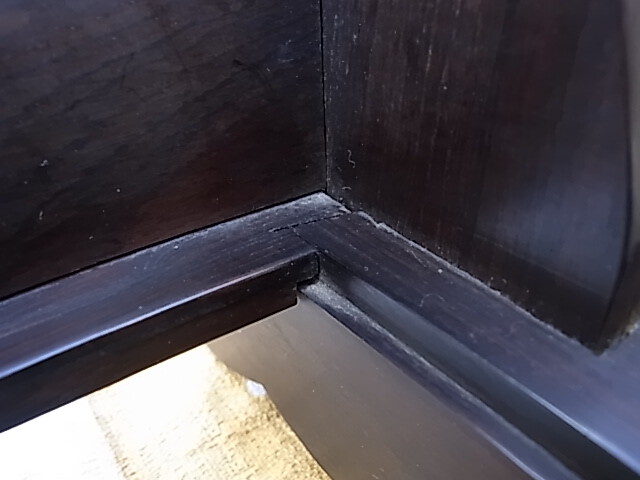-
Posts
11,718 -
Joined
-
Last visited
-
Days Won
156
Content Type
Profiles
Forums
Events
Store
Downloads
Gallery
Everything posted by Bugyotsuji
-

This Week's Edo Period Corner
Bugyotsuji replied to Bugyotsuji's topic in General Nihonto Related Discussion
Ian, as always many thanks for your valuable input. From what I have seen of Japanese pistols, they are boxed horizontally but upright, (not as in the West on their sides), or when displayed in houses or museums, on stands, again horizontally but upright. Matchlock pistols are so rare even in Japan, that I have never actually seen any on a rack, or even such a thing as a pistol rack itself for that matter. Naturally what you say about pistols in the west rings true. I was so tempted by a 'flintlock of Nelson's navy' as the London dealer liked to call it. It had some numbers stamped upon it and must have lived in a locked cabinet to be handed out to a member of the crew before action. Battered and bruised and repaired all over, I would not be at all surprised if it had been used for cracking walnuts. :lol: You are not going to try and make out it is a Mon after all, I hope. My whole lovely story would go down like the Concordia... :| and you don't know how many hours and days and weeks I have been gathering snippets. If it is a Kamon, everything goes back to square one. I am now beginning to think that the reason I was allowed to buy it in the first place is that no-one can come up with a suitable explanation for the silver disc. They know I enjoy a hunt, and rooting out truffles, so I must believe that they are allowing me to run with it for a while. If I can make a plausible story I will write it up in succint Japanese and see if they are interested in displaying it with the item at the exhibition. I can just see them saying "No!" -

This Week's Edo Period Corner
Bugyotsuji replied to Bugyotsuji's topic in General Nihonto Related Discussion
It is recorded in the annals of Ii, that the bullet ricochet(t)ed off Naomasa's armour and pierced his arm as he was holding aloft his sword. He stayed on his black horse as long as he could but finally rolled off in agony. He never recovered from the wound. In 1769 a stone monument was erected to the hero Kashiwagi Motohisa to ease his soul at the Nanrinji Temple in south Kyushu. The inscription avoids using his earthly name, but suggests that when he heard of the death of Ii Naomasa 18 months later, he donned black garb and wandered the country, never to marry or have children and never more to return to his place of birth. *Gen-katsugi is a colloquialism meaning 'for luck'. I wear red underwear when racing on the circuit, for example. Gen wo katsugu, ie to garner good luck. -

This Week's Edo Period Corner
Bugyotsuji replied to Bugyotsuji's topic in General Nihonto Related Discussion
Yesterday in the car on the way to the sword meeting I showed the photos and asked for opinions. One member of the party said, "*Gen-katsugi? Why not? Perfectly reasonable." The story I would like it to be and can half see is that the young Shimazu Naritoshi 1811-1842, who became 7th Lord of Okayama/Bizen, ordered a gun to be made by Tatsuemon Sukenobu for his elder brother, Nariakira 1809-1858, 28th Lord of Satsuma. A good present? The whole country was under orders to re-arm, and the enemy was likely to approach from the south of Kyushu. The gun would be the very best of Bizen, but incorporating Satsuma sentiment. At 65.5 cm, a Kago-zutsu, but much slimmer, designed as a Shageki-ju. The mark underneath would recall the time the family was protected while retreating from Sekigahara when 22-yr-old 'dead-shot' Kashiwagi broke ranks and felled Ii Naomasa from his horse as, under direct orders from Tokugawa Ieyasu, he was leading the following combined Ii + Honda charge to destroy Satsuma. The fall of Ii Naomasa signalled a general pull-back and the remaining Satsuma forces were able to make their escape. The two brothers must have loved this story as children. Could such a silver plate have meant both protection for the family and a wish for accuracy in shooting? Since the Lord Ikeda Naritoshi died in 1842, it could be that the gun he ordered was only completed after his death... (?) but here we further enter the world of speculation. It is well used, so perhaps Nariakira used it in fond memory? -

This Week's Edo Period Corner
Bugyotsuji replied to Bugyotsuji's topic in General Nihonto Related Discussion
Well, however you cut that story, it's a good one and rings true. Two updates. One is on the 'gold' powder. Having read Ian's description of Dutch gold as brass, 84% copper & 16% zinc, the powder that I bought suddenly looked somehow more reddish to me as I opened the lid. It was only an experimental job to paint gold lines on the edges of the gun stand, but I mixed up far too much of both the acrylic lacquer and the powder and had to wander around the house looking for any gold-colored/coloured things that needed a patch-up, like the shikoro on my kabuto. Reddish gold, Welsh gold(?) is now the flavour of the month, but using it has taught me probably 90% of what I needed to know. The other is regarding the Daimyo pistol. The use of Kashiwa oak leaves around the Satsuma Kutsuwa cross has had me flummoxed, but gradually I am clawing back some hints with which to build a circumstantial case for a story. The question is whether I should let it out in globs here, or tie it all together and publish it in some form. If it is indeed a target pistol, as Ron says, then the case for the mark being talismanic as I suggested earlier in this thread is strengthened. Mon or Kamon tended to be placed where they could be seen, either all the way down the sides of the butt and stock, or on the top and/or upper sides of the barrel. This silver plate is hidden, though, underneath the gun where only the owner or the loading party would normally see it. What I wanted was a strong tie-in between these two seeming Mon. What I have found is that the Shimazu family owe(d) their very existence to a young man named Kashiwagi, 柏木(or Kashiwada 柏田 in some versions) an 'elite sniper' as he is described in Japanese blogs on the internet. His family crest was the three 柏 oak leaves. -

This Week's Edo Period Corner
Bugyotsuji replied to Bugyotsuji's topic in General Nihonto Related Discussion
Ah, yes. Similar! Nice atmosphere though. That figures about expensive construction. Someone pointed out that every single upright support was made from the heart of one complete tree to prevent cracking/splitting. The itame lines all vertical and parallel from floor through ceiling. -

This Week's Edo Period Corner
Bugyotsuji replied to Bugyotsuji's topic in General Nihonto Related Discussion
Chris, you mean valuable as objects, expensive for the land, expensive for the intensive labor/labour to keep up? Strangely enough they charged us 4,000 yen for exclusive use of the rooms for the afternoon (7,000 yen for a whole day!) and during that time a notice kept the general public outside... -

This Week's Edo Period Corner
Bugyotsuji replied to Bugyotsuji's topic in General Nihonto Related Discussion
Note the huge boulder for the lord to wash his hands after visiting the room beyond the painted door. -

This Week's Edo Period Corner
Bugyotsuji replied to Bugyotsuji's topic in General Nihonto Related Discussion
The area sword appreciation meeting was held in an old house up a slope next to the art museum overlooking Himeji Castle. The castle is as you know completely hidden under a huge tented scaffolding. If ever you are in the area, try and visit this house and garden. The name means something like 'tea house with a view'. 望景亭 This pretty house and garden was probably used by the Daimyo. The sliding doors at the ends of the corridors have painted scenes on them, reminiscent of Nijo-Jo. I was stunned to see the circular finger catches on the fusuma were all ceramic, held on with bamboo mekugi-like pegs. This was repeated for the catches on the small sliding cupboards too. -
The soft leather strap is an extra bonus, Eric. Well done. They became largely symbolic, long after bows and arrows went out of circulation. (Except for those practising 'kyudo'.) We were all told we had to have one of these as a standard feature of one's armour. I was handed one, but later found another older tsurumaki, so handed the 'free' one back. I have now been wearing it for four or five years; it sort of bounces against the tachi saya.
-
Double check with Kane-ie to be sure. 兼家
-
Have you not got a better shot than that? (The flowers have a kind of Chrysanthemum appearance to them... ?)
-

This Week's Edo Period Corner
Bugyotsuji replied to Bugyotsuji's topic in General Nihonto Related Discussion
The other day I was in a business closing-down salesroom (where they sell unsold items from places that have gone bust) and they had some small cans of clear lacquer with bags of gold powder attached. (Well, 'gold' in colour, but what really? What is Dutch metal?) Now normally I wouldn't spend 16 GBP on a small can of paint, but everything was 70% off... I haven't dared try it yet. Ron, thanks for the vote of confidence. There is that aspect, indeed. The chap who sold it to me is also involved in liaison for the exhibition, so he will be fully aware of this, I can guess. (I hope you still have some interesting bits of the WWII material that you mention.) -

This Week's Edo Period Corner
Bugyotsuji replied to Bugyotsuji's topic in General Nihonto Related Discussion
Further update on the pistol. The castle museum will be doing a 50-day display of armour and guns in the spring and they have asked for it to be included. Not so sure if it's a good thing, but it might even get a pic in the booklet, they say. :| I have made a gorgeous box for it, and a simple lacquered wooden display stand. Last year at the same time the castle featured some wonderful swords and a great display of tsuba, fuchi, kashira etc. in the side cases. -
No. As I said in the post above, it is a copy. Thanks Guido. Makes sense. The paper gives the length of the Wakizashi, 1 Shaku, 7 Sun and 7 Bu (?). It says it is not signed but suggests it was made by 正全 from 尾州. It certifies these facts to be true, and records the sword as 'Kicho' rank as a result. Signed 5 March, Showa 47. On the left 'The Esteemed Matsuda Shin 松田 心 Registration No. 233143
-
Hi Colleague, Which part of this 1972 Wakizashi Kicho-token paperwork copy is troubling you? (I am wondering what the Kanji in front of 銘 Mei could be.)
-

This Week's Edo Period Corner
Bugyotsuji replied to Bugyotsuji's topic in General Nihonto Related Discussion
Eric, I like that. Shades of Imperial Rome! Did you see that movie 'Shogun'? There was a good scene with a hawk in it. (BTW, the stand is almost exacly the same as mine, down to the finger pull hole.) I went round to the sword shop a couple of days ago to enquire and there in the shop was one just like Ian's drum stand, # 1 above!!! (Complete with red ropes.) Common sense tells me 小 should be read Sho-uma-jirushi, as Ko-uma means a small/young foal, yet your link says Ko-uma. Not been able to find the correct reading of the character (within this word) in any disctionary elsewhere. Hmmm... I hope they are right. -

Higo koshirae with a tsuba that has an anna for a bashin
Bugyotsuji replied to b.hennick's topic in Tosogu
Well, I have to admit I have not seen anything quite like this before, but I like it. And you said in the other thread that this hole connects through to a small bashin hitsu ana in the saya! -
Off topic for a moment, but I have at least two very small ones at home, Barry. Neither of them in perfect condition as I recall. Let me check on the measurements this evening. (Sadly no longer used to working in inches, by the way!) Found this old page, BTW: http://www.militaria.co.za/nmb/viewtopi ... a&start=45
-
Speaking from my own limited experience, David, I do not think there was a special name for Kozuka or Kogai of smaller or larger sizes than the standard that you mention. Having spent many months looking for a smaller-sized kozuka even than yours I can say that they do exist, but they are not common. If I were to renew the quest, the first place would be my nearest sword shop. They have secret drawers, and a display case with unusual kozuka/kogai. This must be true for most sword shops in Japan. Failing that, if it was really important, you could have some made up. In my case it became apparent from the shape of the hitsu ana that it was wanting a Bashin after all.
-
Hmmm. Iron... It says the Mei is 彫られています, engraved. If the start price is 18,000 JPY, perhaps they are hoping for the 40,000 yen that I was told mine is worth?
-
Ah, I had a problem with Coventry last summer; 'nuff said.
-
Thanks Guido. It looks good, but like many swords in koshirae, quite rattly when picked up. Perhaps it comes apart easily, but I haven't dared try.
-
Well, at first glance it looks like Hitachi no Kami Muneshige, and he was known for using Nanban tetsu in his swords. Someone (Ken, Hawaii?) on this site was looking for a Muneshige just a couple of months ago, I faintly remember.
-
-
Curran, the wood is quite dark so difficult to find illustrative contrasting shots for you. Very, very smooth surface, quite crudely carved underneath.


